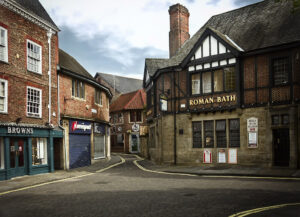Harborough to establish second AQMA
Harborough district council has outlined proposals for the establishment of a new Air Quality Management Area (AQMA) in the district, after monitoring showed that annual mean nitrogen dioxide objectives are being breached.
The AQMA, which will be located along a small section of the A6 Leicester Road, will be the second in the district after Lutterworth high street was designated an AQMA in 2001.

An AQMA is to be declared on a section of road near to Kibworth Harcourt
A consultation on the new AQMA opened on Friday (21 July) and runs until 17 September. Residents are being asked for views on potential solutions to the air pollutant emissions.
Last month the local authority published its 2017 Air Quality Progress Report, which suggested that across the borough annual average results fall within the national air quality standard for nitrogen dioxide — with the exception of Lutterworth high street and the area identified for the new AQMA.
Councillor Neil Bannister, Harborough district council’s portfolio holder for environment and regulation said: “As a council we are required to publish and submit our annual air quality findings to the government and, in general, air quality is very good in the Harborough district.
“However some issues have been recorded in the Kibworths, in addition to the existing issues in Lutterworth. We will continue to work with a number of organisations, including Leicestershire County Council, to seek ways to improve air quality these locations.”
Speed limit
The local authority is also seeking to begin negotiations with Leicestershire county council over the establishment of a 20mph zone within the Lutterworth AQMA.
According to the 2017 progress report more than 15,609 vehicles travel within the Lutterworth AQMA in a 24 hour period. 94 % of these vehicles were cars or light vans, with the majority of these (63%) diesel fuelled. In terms of the contribution to emissions, light duty vehicles were responsible for around 45% of NOx emissions, 70 % of PM10 emissions and 75-80 % of CO2 emissions.
The council ran a simulation of a 20 mph speed limit which it claims would positively impact air quality by dampening acceleration events by up to 30% and resulting in a reduction in average NOx, PM and CO2 emissions across entire route by around 5%.
















